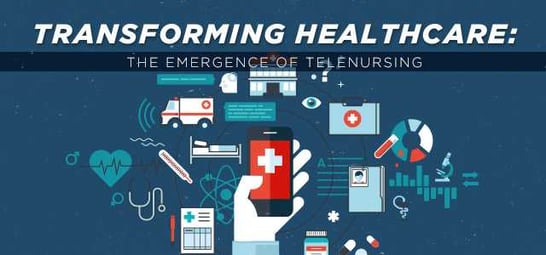 In many cases, patients are now able to access their health care providers through video conferencing, instant messaging, email and other forms of technology. This field, known as telehealth, is growing due to the demand for greater access and convenience in health care, according to Hospitals & Health Networks.
In many cases, patients are now able to access their health care providers through video conferencing, instant messaging, email and other forms of technology. This field, known as telehealth, is growing due to the demand for greater access and convenience in health care, according to Hospitals & Health Networks.
Advances in technology allow nurses to interact with patients remotely. This has led to the term “telenursing” or “telehealth nursing,” which is defined as “the use of telehealth/telemedicine technology to deliver nursing care and conduct nursing practice,” the American Telemedicine Association (ATA) says.
Telenursing is not a specialty area in nursing. Nurses in nearly all practice settings can provide care at a distance. And given the rapid rise of telenursing, current and future nurses can expect to have more career opportunities in this field.
Growth and Benefits
More than half of all U.S. hospitals use some form of telemedicine, according to the ATA. A survey shows that 90 percent of health care executives are developing or implementing a telemedicine program.
Other signs point to the growth of telemedicine and telenursing. State lawmakers are supporting legislation for telemedicine-related reimbursements. These changes have been accepted by private and public insurers. Providers are even extending services across the globe, and the ATA notes that more than 200 academic medical centers in the United States offer video-based consulting in other parts of the world.
Primary benefits associated with telemedicine include the following.
· Cost Savings: A heart failure telemonitoring program led to 11 percent cost savings, with an estimated return on investment of $3.30 in cost savings for every $1 spent on program implementation, according to the American Hospital Association. U.S. employers could save an estimated $6 billion by offering telemedicine, global professional services company Towers Watson says.
· Flexibility: About 20 percent of Americans live in rural areas without easy access to primary care or specialty care. More than 40 percent of hospitals surveyed said that a leading reason for investing in telemedicine tools is filling in gaps due to community remoteness. A survey of patients conducted by Software Advice, a company that compares electronic health records, revealed that 21 percent viewed the top benefit of telemedicine as not having to travel to receive care.
· Quality Care: Patient readmissions in the heart failure telemonitoring program were 44 percent lower over 30 days and 38 percent lower over 90 days, compared to patients not enrolled in the program. A study of 8,000 patient care outcomes using telemedicine services found no difference between the virtual appointment and an in-person office visit. In a Humana Cares remote health monitoring and management program for patients with congestive heart failure, at least 90 percent of patients felt more connected to their nurse, said the virtual care suite was easy to use and said they would recommend the program to their friends.
For patients who have not used a telemedicine service, 75 percent are interested in using one instead of an in-person medical visit, according to the Software Advice survey. For patients who have used telemedicine, 67 percent say that using telemedicine “somewhat” or “significantly increases” their satisfaction with their medical care.
Careers in Telenursing
“Telehealth nursing is practiced in the home, health care clinic, doctor’s office, prisons, hospitals, telehealth nursing call centers and
mobile units,” the ATA says. “Telephone triage, remote monitoring and home care are the fastest growing applications.”
Growth in telehealth has led to several telenursing practice areas:
· TeleICU
· Teletriage
· Teletrauma
· Telestroke
· Telepediatrics
· Telemental health
· Telecardiology
· Telehomecare
· Telerehabilitation
· Forensic telenursing
An example of telehealth transforming health care has been in the ICU. “Although the role of the bedside care-giver can never be replaced or diminished, it can certainly be augmented, enhanced, and facilitated,” Critical Care Nurse says. “The key to the long-term success is the continued consistent collaboration between the bedside team and the tele-ICU nurses, which can transform how critical care nursing is practiced.”
TeleICU has improved outcomes for critically ill patients by reducing ICU mortality, shortening stays in the ICU and in the hospital, increasing compliance with evidence-based best practices, improving outcomes for cardiopulmonary arrest patients and decreasing costs for patient care. ICU nurses use audio and video technology to assess and monitor patients at the patient’s bedside. At the click of a mouse, nurses have access to medical records, diagnostic images and laboratory results, as well as standard monitoring such as electrocardiography and hemodynamic values.
Major responsibilities for the teleICU nurse include making rounds via the camera and assessing all patients. The nurse will assess the patient’s physical appearance by video, check equipment for safety,
verify infusions and verbally interact with the patient, the patient’s family and staff. The nurse also acts as a resource for the bedside nurse, quickly retrieving vital pieces of information and data, and drafting detailed admission notes when a patient arrives in the unit to keep complete information about the patient available.
Future Opportunities
“As the US healthcare environment continues to evolve due to changes in reimbursement, legal issues, and shrinking healthcare resources, the expanding role of telehealth nurses will continue to evolve,” the ATA says. “Leadership and collaboration among international nurses is needed to outline the uses of ehealth/telehealth technologies to provide nursing care in an interdisciplinary manner to patients, regardless of staffing, time, or geographic boundaries.”
Career opportunities in areas such as telenursing will rely on candidates with a strong educational background. Educational standards are already on the rise, as more hospitals across the nation require nurses to hold a BSN degree. Aurora University’s online RN to BSN program equips graduates with the skills and knowledge needed to pursue advanced career opportunities. The program takes place in an online learning environment, allowing students the flexibility and convenience to complete their degree while maintaining their work and personal schedule.


 Cultural respect is vital to reduce health disparities and improve access to high-quality healthcare that is responsive to patients’ needs, according to the
Cultural respect is vital to reduce health disparities and improve access to high-quality healthcare that is responsive to patients’ needs, according to the 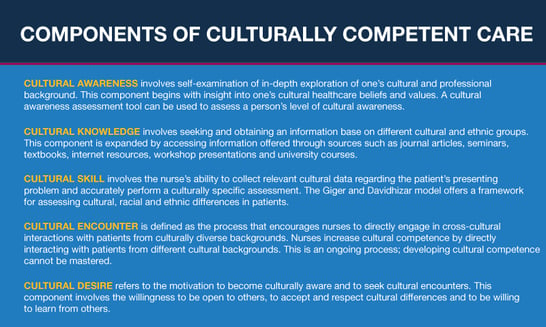
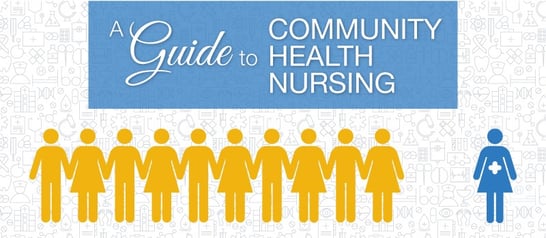 All nurses work to improve health outcomes and help monitor and manage disease. But community health nurses work in traditional public health settings and focus on the overall health of an entire community or multiple communities. Community health nursing is also known as public health nursing.
All nurses work to improve health outcomes and help monitor and manage disease. But community health nurses work in traditional public health settings and focus on the overall health of an entire community or multiple communities. Community health nursing is also known as public health nursing. To be a successful nurse, excellent communication skills are required. The ability to communicate and connect with patients and health care professionals can help build relationships, prevent mistakes and provide a higher level of care.
To be a successful nurse, excellent communication skills are required. The ability to communicate and connect with patients and health care professionals can help build relationships, prevent mistakes and provide a higher level of care.
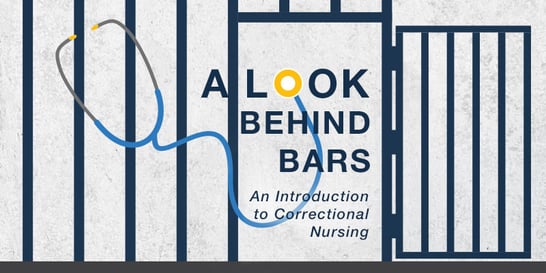 Correctional nursing is a specialty providing healthcare in jails, prisons and juvenile confinement facilities. But outside of the specialty, few recognize the importance of correctional nurses in treating an underserved population.
Correctional nursing is a specialty providing healthcare in jails, prisons and juvenile confinement facilities. But outside of the specialty, few recognize the importance of correctional nurses in treating an underserved population. 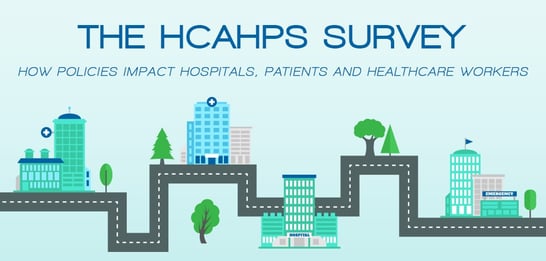 In 2012, the Affordable Care Act introduced a new policy that would help calculate Medicare reimbursement and bonuses to healthcare facilities. More than $1 billion is withheld from hospitals each year, and only facilities that maintain basic care standards and obtain high patient satisfaction survey scores earn money back.
In 2012, the Affordable Care Act introduced a new policy that would help calculate Medicare reimbursement and bonuses to healthcare facilities. More than $1 billion is withheld from hospitals each year, and only facilities that maintain basic care standards and obtain high patient satisfaction survey scores earn money back.